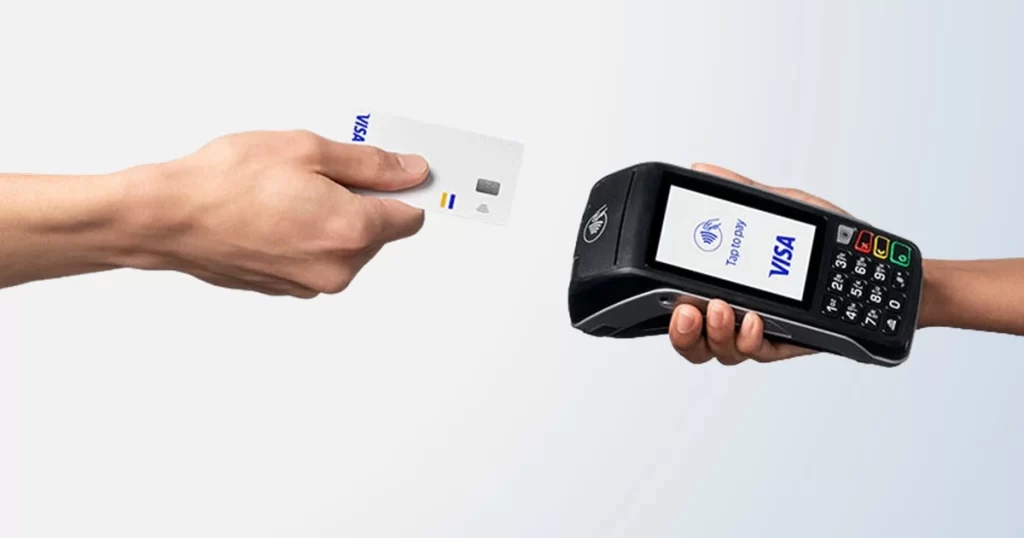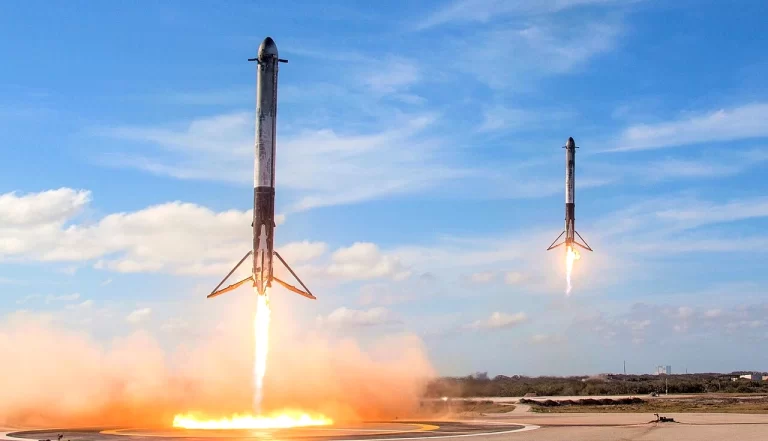Visa, a global leader in digital payments, has been at the forefront of transforming the payments landscape. As the demand for fast, secure, and convenient payment solutions grows, Visa has aggressively expanded its contactless payment services and developed API solutions to cater to the evolving needs of businesses and consumers alike. This case study explores Visa’s strategic expansion in the contactless payment space, examining the initiatives, technological advancements, and partnerships that have propelled Visa to a dominant position in the market.
Background
Contactless Payment technology has revolutionized the way consumers conduct transactions. Utilizing near-field communication (NFC) technology, contactless payments allow users to simply tap their card or mobile device near a point-of-sale terminal to complete a transaction. This technology has gained widespread adoption due to its speed, convenience, and enhanced security features, such as tokenization, which replaces sensitive payment information with a unique identifier.
Visa recognized early on the potential of contactless payments to streamline consumer experiences and reduce transaction times. By leveraging its global network and technology infrastructure, Visa has not only expanded the availability of contactless payments but also enhanced the ecosystem with API services that empower businesses to integrate Visa’s payment solutions into their applications seamlessly.
Strategic Initiatives
Global Expansion of Contactless Payments
Visa has made significant investments in expanding the global reach of contactless payments. By partnering with banks, retailers, and technology providers, Visa has enabled contactless transactions in over 200 countries. The company has also focused on increasing the number of contactless-enabled terminals, making it easier for consumers to use this payment method in various settings, including public transportation, retail stores, and dining establishments.
Visa’s strategy includes deploying marketing campaigns to educate consumers and merchants about the benefits of contactless payments. This has been particularly effective in markets with low initial adoption rates, where Visa has used targeted promotions and incentives to drive consumer behavior change.
Enhancing Security through Tokenization
One of Visa’s critical differentiators in the contactless payment space is its robust security measures. Visa employs tokenization technology, which replaces sensitive payment information with a unique identifier that cannot be used outside the specific transaction context. This technology minimizes the risk of data breaches and fraud, thereby increasing consumer trust in contactless payments.
Visa’s security enhancements have been instrumental in gaining regulatory approval and acceptance among financial institutions, which view these measures as essential for safeguarding consumer data.
API Services and Developer Platforms
To further support the growth of contactless payments, Visa has developed a suite of API services that allow businesses to integrate payment solutions into their platforms. The Visa Developer Platform provides access to a wide range of APIs, including those for payment processing, fraud prevention, and data analytics.
These APIs enable businesses to offer customized payment experiences, integrate with existing point-of-sale systems, and leverage Visa’s security infrastructure. By offering these tools, Visa empowers businesses of all sizes to innovate and offer enhanced payment solutions without needing to build complex payment infrastructures from scratch.
Partnerships and Collaborations
Visa has strategically partnered with fintech companies, payment processors, and other technology firms to expand its contactless payment and API services. Notable collaborations include partnerships with Apple Pay, Google Pay, and Samsung Pay, which have significantly boosted the adoption of contactless payments through mobile wallets.
Additionally, Visa has worked with public transportation authorities worldwide to enable contactless payments for transit. This initiative not only enhances commuter convenience but also positions Visa as a key player in the smart city ecosystem.
Results and Impact
Visa’s expansion in contactless payments and API services has yielded impressive results:
- Increased Adoption: The number of contactless transactions processed by Visa has surged, with many markets reporting a doubling of contactless payments year over year. In some regions, such as Europe, contactless payments now account for over 80% of all face-to-face transactions.
- Consumer Trust and Security: Visa’s commitment to security has paid off, with a marked reduction in fraud rates for contactless transactions. This has further boosted consumer confidence and accelerated adoption.
- Business Innovation: The availability of Visa’s API services has catalyzed innovation across industries. Businesses are leveraging Visa’s APIs to create new payment experiences, integrate loyalty programs, and utilize data analytics for better customer insights.
- Global Reach: Visa’s presence in over 200 countries, combined with its vast network of partners, has made it a leader in the global contactless payment market. This expansive reach allows Visa to continue driving growth and innovation on a global scale.
Visa Contactless Payment Adoption
Visa’s strategic investment in contactless payments has led to a significant increase in adoption across various metrics from 2018 to 2023. The number of Visa contactless-enabled cards surged from 15 million in 2018 to 300 million by 2023, reflecting a robust push to equip consumers with the capability to tap and pay. This increase was paralleled by a substantial rise in merchant adoption, reaching 85% by 2023, as more businesses upgraded their POS systems to accommodate contactless transactions. The resulting growth in consumer usage, which rose to 63% by 2023, underscores the widespread acceptance and preference for the speed and security of contactless payments. Visa’s continued innovation in this space, including advanced fraud prevention measures like tokenization, positions it as a leader in the global shift towards a cashless society.
Visa Contactless Payments Expansion by Country
Visa’s strategic focus on expanding contactless payment technology has resulted in significant adoption worldwide, driven by key initiatives like Tap to Phone, which allows merchants to use smartphones as contactless payment terminals without additional hardware. This innovation, now active in 121 countries with over 6.7 million terminals, reflects Visa’s commitment to simplifying and scaling digital payment solutions for businesses of all sizes. The growing preference for contactless payments—evidenced by exponential growth in markets like the U.S., UK, and Australia—underscores the consumer demand for faster, secure, and convenient payment methods, positioning Visa as a leader in the evolving digital payments landscape.
Challenges
Despite its successes, Visa faces challenges in the continued expansion of contactless payments:
- Regulatory Hurdles: Different regions have varying regulations that impact the deployment of contactless payment solutions. Navigating these complexities requires constant adaptation and negotiation with local authorities.
- Market Saturation: In highly developed markets, Visa faces saturation, where nearly all potential customers are already using contactless payments. Future growth will depend on finding new applications and markets for these technologies.
- Competition: Visa’s competitors, including Mastercard and emerging fintech companies, are also aggressively expanding their contactless payment solutions. Maintaining market leadership requires continual innovation and strategic partnerships.
Future Outlook
Visa’s strategy for expanding contactless payment and API services continues to evolve. Looking forward, Visa aims to:
- Expand into New Markets: Visa is targeting emerging markets where cash is still prevalent, using its expertise to drive digital payment adoption.
- Develop New Use Cases: Beyond traditional retail, Visa is exploring new applications for contactless payments, such as in healthcare and education sectors.
- Enhance API Offerings: Visa plans to expand its suite of APIs to provide more comprehensive solutions that cater to a broader range of business needs, including enhanced analytics and personalized customer experiences.
Conclusion
Visa’s expansion of contactless payment and API services demonstrates its commitment to innovation and meeting the changing needs of consumers and businesses. Through strategic partnerships, a focus on security, and the development of robust API services, Visa has solidified its position as a leader in the digital payments space. As contactless payments continue to grow in popularity, Visa is well-positioned to lead this transformation, driving further adoption and setting new standards for convenience and security in the payments industry.
Key Takeaways
- Visa’s investment in contactless payment technology has driven significant global adoption.
- The company’s API services facilitate seamless integration of payment solutions for businesses.
- Partnerships and collaborations are central to Visa’s strategy for expanding its payment ecosystem.
- Ongoing challenges include regulatory navigation, market saturation, and competition.
- Visa’s future focus includes expanding into new markets and developing innovative payment applications.




